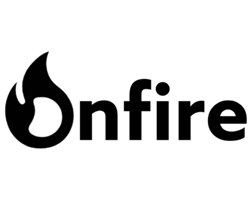
Company Values and Culture: The Power of Candor
November 06, 2020
Case categories include: Culture Founder’s Insights Leadership

By Paul Witkay, Founder & CEO, Alliance of Chief Executives
When I envision a strong business relationship, I see a foundation built on unreserved honesty and sincere expression. In a word, candor. If implemented correctly, candor has the power to deliver essential truths and encourage meaningful action within an organization. It cuts through noise, generalities, niceties, and “group think.” It builds trust and respect amongst colleagues, addresses lingering concerns and transforms thoughts into concrete strategies.
Within my own organization, the Alliance of CEOs, our company values and culture have made candor a core priority—and for good reason. Alliance meetings give leaders the opportunity to speak freely about anything and everything related to their businesses and their lives. Major strategic challenges and opportunities are addressed and if total honesty isn’t in place, the best solutions will never be discovered. Candor creates opportunities for thinking beyond one’s own experiences and preferences, leading the way to progress.
Using Candor to Find the Fresh Approaches
For those entrusted to lead organizations, tough decisions are part of the job. Modern enterprises are complex with disparate departments and teams working toward common goals. When major issues arise, simple solutions are often impossible, as decisions have rippling effects across the organization and can impact others in unforeseen ways. Even seemingly popular decisions can shake board members’ confidence and alienate employees if results are lackluster.
Identifying the best approaches to complex situations requires honest and candid communication. Hiding weaknesses or protecting fiefdoms wastes valuable time. Embracing candor can make you feel vulnerable, but it’s absolutely necessary if leaders want to develop fresh approaches and attack problems from multiple angles.
Below are two examples of difficult situations faced by Alliance members who were willing to challenge their fellow CEOs to learn how they would approach them:
Situation A: Leadership in a Crisis
Imagine you’re the CEO of a large, private equity-backed, industrial company and were forced to lay off 40% of your workforce due to an industry-wide slowdown. You’ve shut down three of your overseas offices, and employees in your remaining Bay Area locations are currently working from home. Two large clients have cancelled major orders and your entire supply chain is experiencing delays due to COVID-19.
You present your situation to your fellow CEOs and they explore all aspects of your operations from your current customer needs, to your competitive positioning, to your financials. The situation is dire and the CEOs feel the weight of the decisions that you must make to balance the needs of your shareholders with customer and employee concerns. Your honesty has caused the CEOs to deeply engage in the challenge. They bring experience from a wide range of industries and have dealt with challenges ranging from scaling high-growth companies, to turning around broken companies, and shutting down plants. When asked what they would do “if they were in your CEO seat, ” their approaches range from closing international operations, to selling parts of the business, to developing innovative new ways to serve your key customers current needs. They don’t attempt to determine one single “solution” because it’s impossible to know how negotiations with your banks and key customers will play out. However, they generate a number of creative approaches that leave you feeling energized and hopeful. Consistent themes from your fellow CEOs include: focusing first on your core mission; and working more closely with key customers to identify ways that will help sustain your organization through this crisis and position for a rebound when markets return.
Situation B: A Window of Opportunity
In this situation, imagine you’re the CEO of a high-growth, global, tech company and you closed a major round of financing just prior to the economic collapse due to COVID-19. Your largest competitor failed to raise money in time and, as a result, they lack the ability to take advantage of this moment in time. You have the opportunity to acquire several exciting early-stage companies that would enable you to significantly grow your market share and put your competitor in your rearview mirror. However, you don’t believe your executive team is ready to take on the challenges that fast growth will bring and, at the same time, smoothly integrate the new acquisitions into your organization. You believe your CFO, CMO and CRO are not the right leaders to take the company to the next level, but you don’t want to slow down progress by shaking up your executive team right now.
This CEO was totally candid about her exciting opportunities, as well as her deep concerns. This allowed the other CEOs to pose thoughtful and difficult questions that dug into areas she hadn’t discussed such as her board, business model, financing & marketing strategies, product road maps, KPIs and potential points of failure.
The CEOs knew that there would be no “perfect strategy,” but by exploring every aspect of the situation, they were able to identify the most attractive opportunities and the major risks that must be addressed to maximize the probability of success. Although the CEO was in a most enviable position, she suppressed her urge to think, “I know what I’m doing. Why should I listen to anyone else?” She wanted these CEOs to challenge her assumptions, recognizing that fresh and innovative ideas often come from stepping outside of her own comfort zone and getting outside perspectives.
Inside the Alliance of CEOs, I have seen time and again how candid conversations have allowed members to see past their own perspective and discover out-of-the-box solutions to complicated issues. Making candor a central part of your company values and culture can be invaluable and strengthen your ability to foster qualities like diversity of thought, humility, curiosity and openness. With these elements in place, enterprises are far more apt to take stock of current resources and discover new paths to success—in other words, exploring the world of both knowns and unknowns.
Integrating Candor into Company Values and Culture: Navigating Knowns and Unknowns
The framework of knowns and unknowns is a method dating as far back as Ancient Greece. Used by leaders ranging from Socrates to Donald Rumsfeld, this framework involves four categories:
- Known Knowns: This includes all known information your company has collected over the years.
-
Known Unknowns: This is all the information you believe you need, but do not have. For example, you have identified a problem but still need to figure out how to solve it.
-
Unknown Knowns: This includes information that you believe you already understand, but are unaware that you’re mistaken – things have changed!
-
Unknown Unknowns: We cannot know what we don’t know, and the only way to identify unknown unknowns is to intentionally interact with people with entirely different experiences who will expose us to as wide a range of ideas and opportunities as possible.
While recorded information and targeted research are necessary, I find the most impactful insights happen when we discover unknown knowns and unknown unknowns. Linking seemingly unrelated elements is what generates some of the best ideas, but finding them requires exposure to diverse points of view, deep thought and active brainstorming.
That’s where candor fits in—navigating this matrix requires acknowledging that you don’t have all the answers. You need to be open to hearing different points of view and finding the flaws in your own thinking. Speaking from personal experience, when some of today’s most successful companies arrived on the market, I did not understand their appeal. For example, when I first heard of Airbnb, I thought, “Why would I want to stay at a stranger’s house when I can just stay at a hotel?” Since then, however, I have come to understand that Airbnb can provide a totally different experience that traditional hospitality services simply can’t replicate.
When you’re too headstrong to recognize the value of new ideas, you very well could miss out on the best opportunities of your career. Armed with candor, you can open your mind to new ideas and experiment with new thoughts.
To fully realize these benefits, you need to encourage others in your organization to share your open-mindedness and honesty. Some of the best techniques I’ve found to integrate candor into company values and culture include:
- Promoting participation in meetings and being receptive to all thoughts
- Communicating with employees on a personal level outside of meetings to create a comfortable business environment
- Maintaining an open door policy to encourage feedback and make employees feel heard
- Role modelling candor by admitting mistakes, embracing vulnerability and not having all the answers
With these strategies, you can create an environment that fosters excellence and innovation.
Candor Spurs Growth
In my years with Alliance leaders, I’ve seen how candor can provide the key to breakthrough ideas. To a degree, we all exist in bubbles that inform how we see the world. Our preconceived notions can blind us to new possibilities and keep us from voicing potentially controversial thoughts to others. But this kind of thinking stunts growth, both personally and professionally.
Sharing your true thoughts and being receptive to honest feedback is essential to developing as a company, and can set the stage for major organizational breakthroughs. When your company values and culture include candor, you empower employees to contribute their ideas, even if they may seem unconventional. After all, thoughts that seem odd at first glance have sometimes evolved into world-changing concepts.
For more thoughts on the power of candor and forming strong company values and culture, contact the Alliance of CEOs today.
About
The Alliance of Chief Executives is an active community of business leaders that focuses on deep strategic exchanges, challenging existing assumptions and generating fresh ideas.
Contact Us
Alliance of Chief Executives, LLC
2175 N. California Blvd.,
Suite 605
Walnut Creek, CA 94596
- 925-942-2400 Office
- 925-956-4424 Fax
- Email: info@allianceofCEOs.com
Newsletter
Subscribe to our newsletter and stay up to date with the latest Alliance news!












































